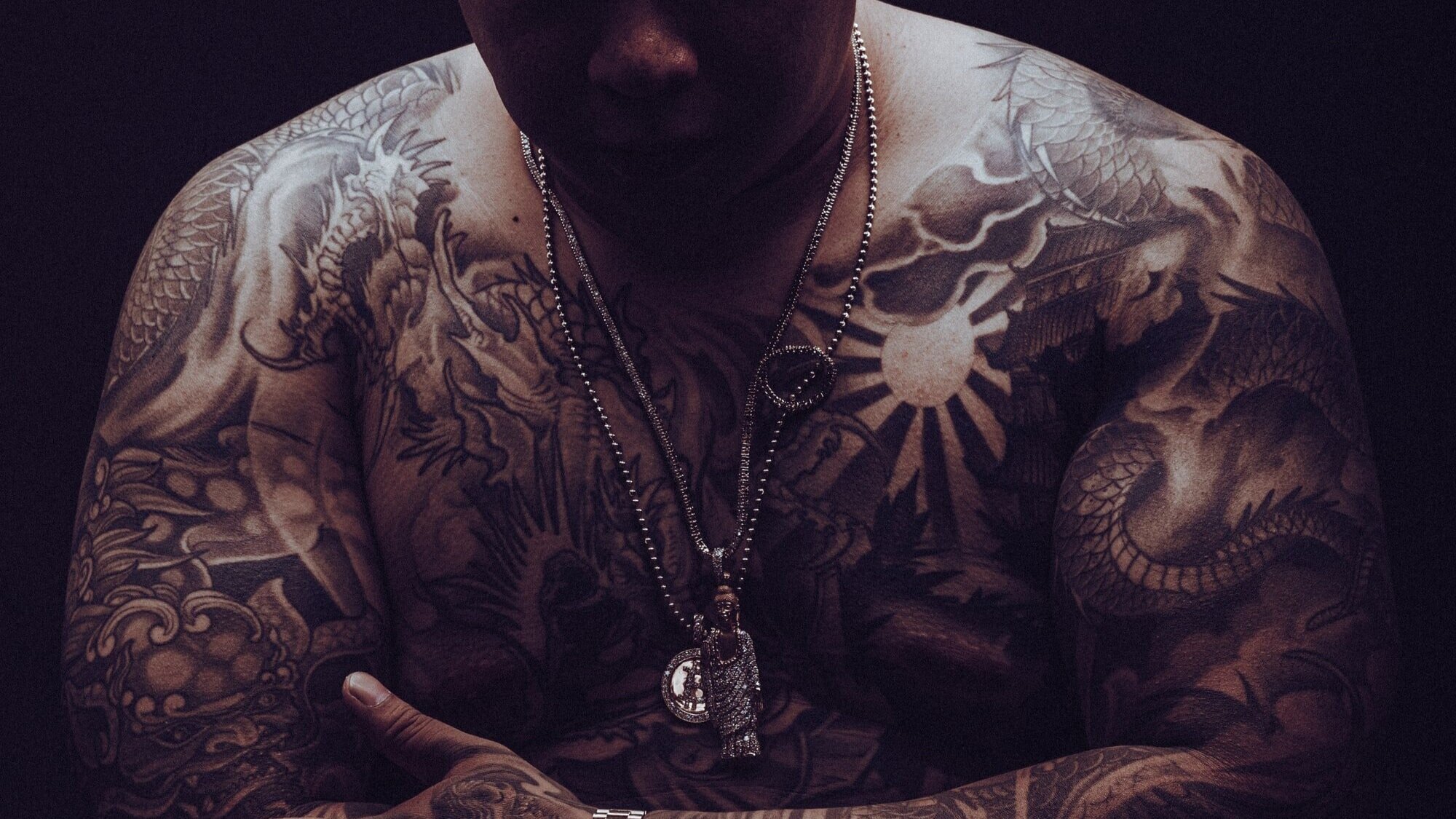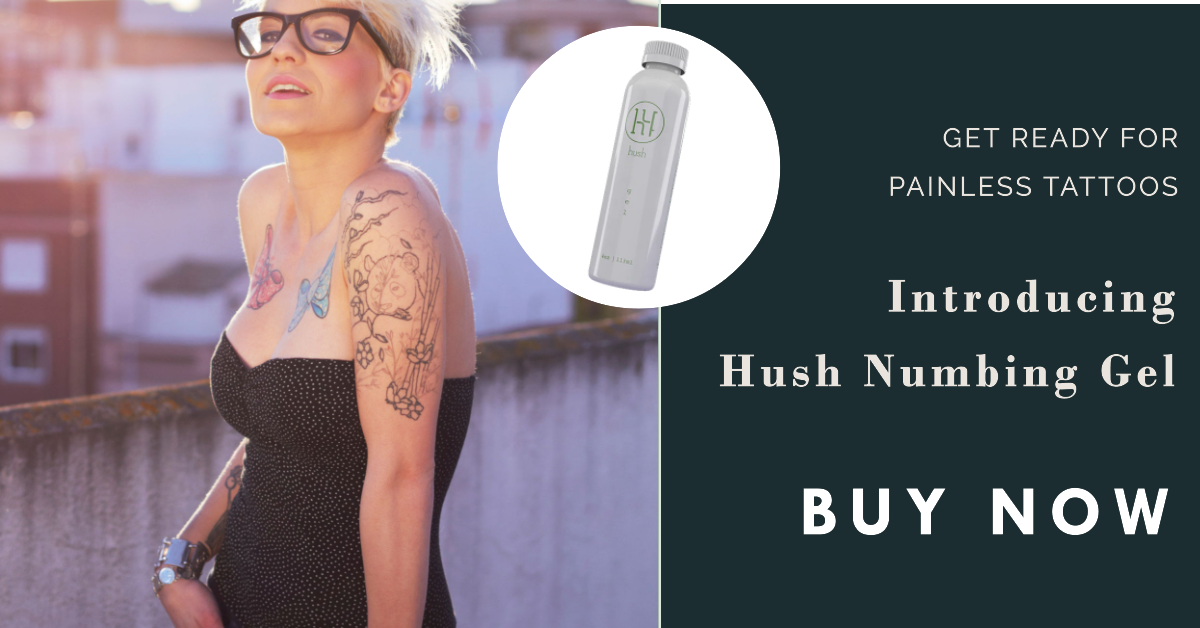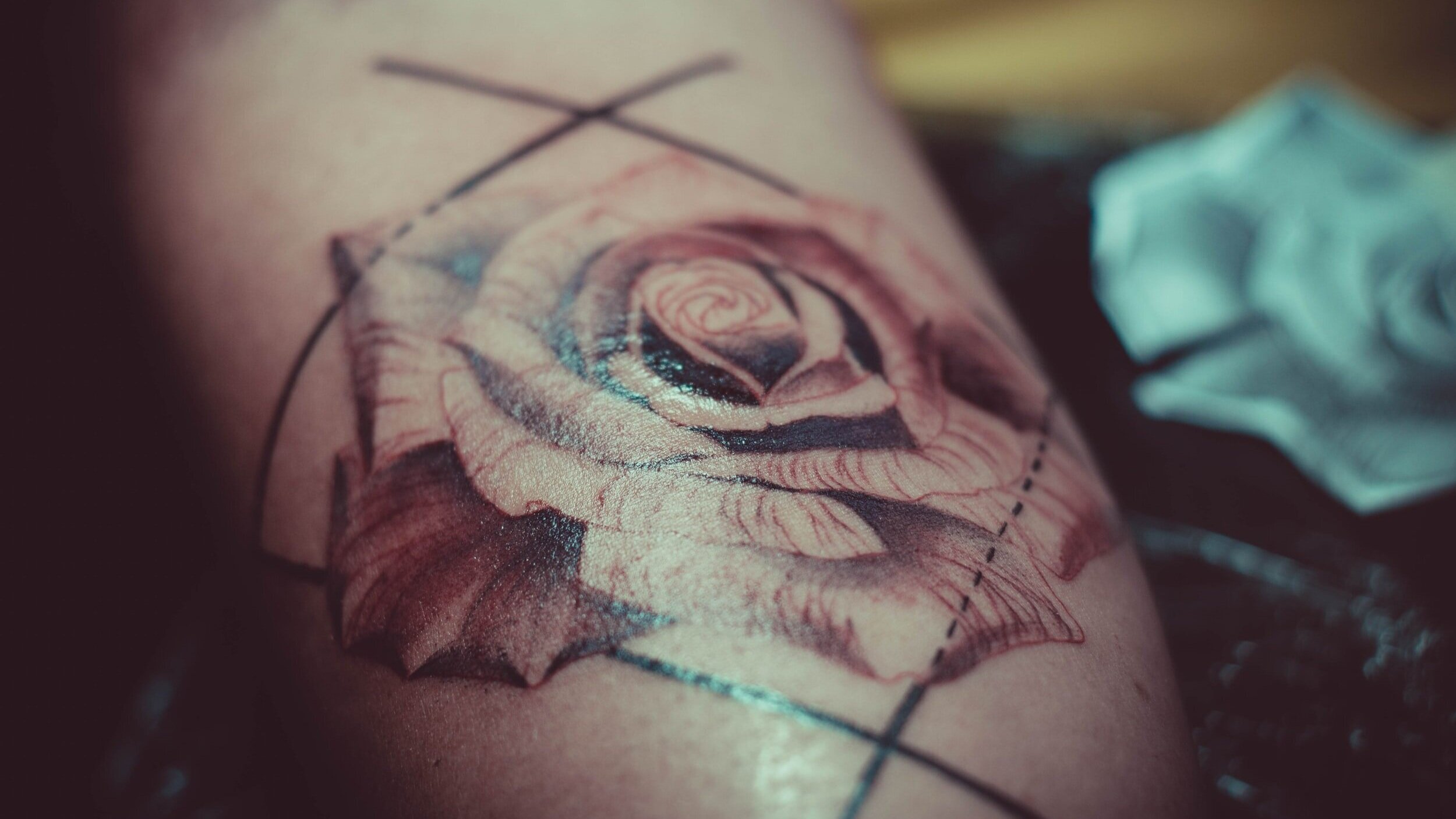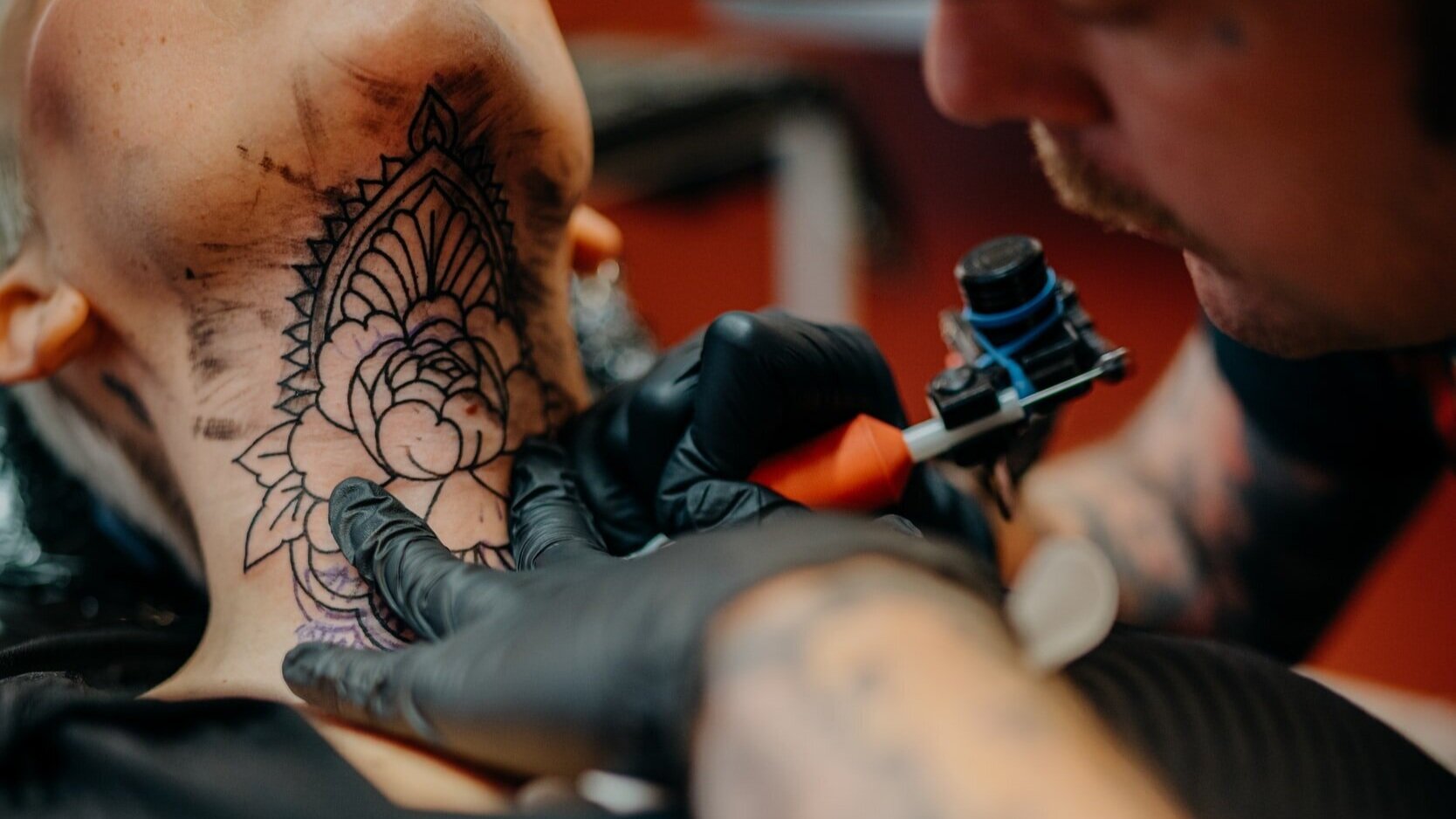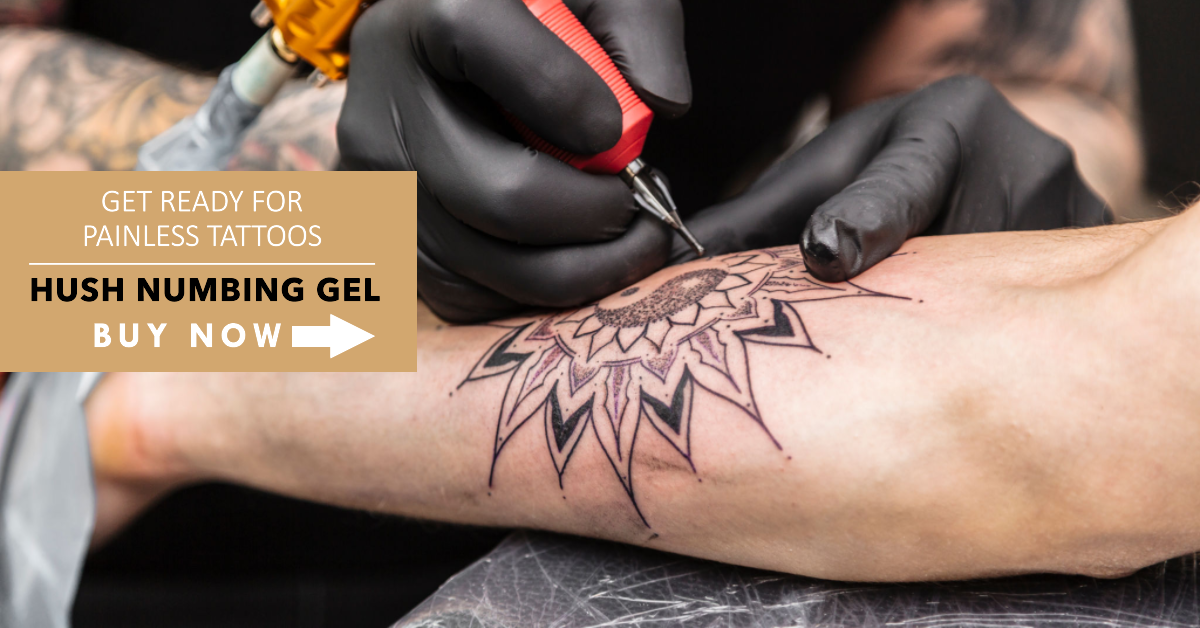Tattoos and Weight Loss: Everything You Need to Know
/Bodies are always changing and body size can be one of the more dynamic parts of our lives. If you have recently gotten a tattoo, or you are thinking about getting one in the near future, you may be wondering what happens if your body changes. So, what happens to a tattoo after weight loss?
A tattoo after weight loss can vary depending on the placement, but mostly how fast you lose the weight. Stretching skin can lead to reductions in tattoo quality depending on the amount of weight lost and how quickly the weight is dropped.
The question of what happens to a tattoo after weight loss is only the first part. It raises several other questions, such as how to avoid deforming tattoos, what to do with stretch marks or how to touch up your tattoo if it was affected. Read on to discover all you need to know about tattoos after weight loss, and more.
Worried about the pain of getting a tattoo? Click the image below and ensure a painless tattoo!
Will Losing Weight Ruin a Tattoo?
People get tattoos for varying reasons, but sometimes they do not think about what will happen to that tattoo over time. It will not always look the way it did the day you got it. The same is true if you were to lose a bunch of weight quickly.
There is no guarantee that losing weight will ruin your tattoo so do not let that stop you from getting tattooed. The biggest factors to consider are how much weight you lose, how fast you lose the weight and where on the body your tattoos are placed.
If significant weight loss is something you plan for in the future consider some of these suggestions:
Placement. Forearms, upper torso, outside thigh, lower legs and feet are all areas that are much less affected by weight loss. These are places that are relatively safe to place a tattoo regardless of how fast you are loosing weight. Mid-riff areas and upper arms can also be safe from heavy distortion if the weight loss is slow and accompanied by increasing muscle tone
Size. The size of the tattoo could be a factor when considering how weight loss will affect a tattoo. The larger the tattoo, the more room for error there is. It is much more obvious on a larger tattoo when shifting or stretching occurs. A small tattoo covers less surface space and is, therefore, less susceptible to changes.
Shape. The shape of the tattoo is also important. Tattoos that are asymmetrical and irregular will not show as many signs of change. However, if you have symmetrical tattoos or tattoos that use shapes, such as squares or circles, the change after weight loss may be more apparent.
So, weight loss can affect a tattoo, especially if the weight loss happens quickly and if the tattoo is located on certain areas of the body, such as the stomach, upper/inner arm or inner thighs.
How Do Tattoos Look When You Lose Weight?
Small weight changes will not affect tattoos that much. It may not even be noticeable. However, when you lose an extensive amount of weight quickly, changes will be noticeable
If a tattoo has been affected by significant weight loss you may notice warping, stretching or other distortions. Smaller tattoos will suffer different physical changes than larger ones, though both will be affected.
When you lose a sizable amount of weight, quickly the elasticity of the skin may not adjust along with the weight loss. This extra skin will distort the tattoo. But what other physical changes occur to tattoos after you lose weight?
Wrinkling. Tattoos, especially larger ones, can appear wrinkled after you lose weight. This is because of the excess skin where the fat was once stored. This is why gradual weight loss along with muscle toning is crucial if you want to preserve the integrity of your tattoo.
Definition. Tattoos of all sizes can lose clarity with weight loss. If you have a very intricate tattoo, some of those details can become distorted, faded, or just not as clear as before.
Positioning. The position of the tattoo can change, too. For example, if you have a tattoo that is perfectly centered on your thigh before you lose weight, it may not be perfectly centered anymore. The skin moves and is altered, thereby altering the tattoo with it. It may appear more to one side than before.
Size. While the actual size of the tattoo will not change, the perception of its size can. Losing weight can affect how big a tattoo may appear, and this can frustrate many people who want their tattoo to be of a specific size.
Drastic weight loss can alter the tattoos you have, especially in more fleshy areas of the body.
Should You Get a Tattoo If You Are Losing Weight?
Ultimately the final answer to this question must be up to each individual but there are some guidelines that will keep tattoos safe from alteration during weight loss.
If you are losing weight gradually, accompanied by increasing and maintaining muscle tone, there shouldn’t be any major issue with getting tattooed while losing weight.
If you do decide you want to get a tattoo when you are losing weight, you need to consider a few things.
Where you are getting the tattoo. As mentioned earlier, the positioning of the tattoo is important. More fleshy areas of the body respond more aesthetically to weight loss than others. So, it may be best to avoid stomach, breast, butt, or thigh tattoos as these areas will be affected the most.
How much weight you are losing/How fast you are losing it. If you are only losing a small amount of weight, or you are losing weight over a long period in gradual intervals, the weight loss will not affect your tattoos that much. However, if you are trying to lose a lot of weight quickly, it is probably best to wait until afterward to get your tattoo.
How big of a tattoo do you want? If you only want a small tattoo in a less fleshy area of your body, then there is no reason to wait to get it. However, if you want a more intricate, large tattoo, waiting is recommended as these tattoos can be altered by weight change much more than their smaller counterparts.
So, it is up to you and your comfort level as to whether you should get a tattoo while you are losing weight. In most cases, it may be best to wait until you are close to your ideal weight, but smaller tattoos or tattoos in areas that are less prone to stretch will be perfectly fine.
What Can You Do To Your Tattoo After Weight Loss?
You have been losing weight quickly, and your tattoo now looks less than ideal. What can you do? While there are not many things you can do in this situation, there are a few options you may want to consider.
It greatly depends on the extent of the alteration your tattoo has gone through because of your weight loss. For example, if you have only lost a small amount of weight, you may not need to do much to make the tattoo look good again.
Touch-ups. Sometimes, rapid weight loss can result in faded tattoos. This can be fixed with some touch-ups. You can have your tattoo artist add some color and definition back into the tattoo, which will help it look more vibrant again.
Add to the tattoo. You may also decide you want to fix the tattoo more than just adding some color. You may want to add to the tattoo to make it look better in its altered state or camouflage some of the changes.
Removal. While this is not a decision to make lightly, some people decide that the alteration weight loss has made on their tattoo warrants its removal. This is a painful and lengthy process, so it should not be rushed into.
After you have lost a lot of weight, you may have to make these decisions. Of course, you can always choose to do nothing, and honestly there is nothing wrong with learning to love the new story your tattoos are telling as a result of weight loss.
Is It Better to Get a Tattoo When You Are Thinner?
When looking at how a tattoo can be changed by weight loss, it is reasonable to wonder if it is better to get a tattoo when you are skinny.
It is neither better nor worse to wait to get tattooed when your are at your “ideal” weight.
However, there are a few variables you need to consider before answering that question. Mainly, what is your timeframe? Consider these aspects of getting a tattoo:
Do you plan on losing weight? If you are looking to lose weight very quickly, but you want a tattoo, then maybe you should wait. As mentioned earlier, it greatly depends on the type of tattoo you want to get.
Less weight means less surface area. Getting a tattoo when you are thinner means there is less surface area, so your tattoo will be applied differently. If you are losing large amounts of weight, this needs to be considered.
When you are thin, you have the opposite issue. Getting a tattoo when you are skinny is okay, but remember, you can always gain weight, which will also alter your tattoo.
So, as with most aspects of getting a tattoo, it comes down to the individual. You can get a tattoo if you are not at your idealized weight, but if you plan on losing weight, it can be a good idea to hold off for a little while if the above considerations affect your outlook.
Where Will Tattoos Stretch the Least?
One of the biggest reasons for tattoos changing over time is the skin on your body stretching. Whether you are gaining weight over time or losing it, the stretching of your tattoo is a consideration.
Places on your body where less fat is stored will endure much less stretching and distortion. For example, your middle torso which is a large storage area for weight, is not the best place to get a tattoo if you want to avoid significant stretching.
Where will tattoos stretch the least? Consider these areas for your next tattoo:
Forearms. Your forearm does not store much fat, nor does it change much over time. The skin will remain mostly firm, so you do not have to worry about many changes if you get a tattoo here.
Wrists. Your wrist will always be a thinner part of your body and will hardly undergo any stretching whatsoever.
Calves and ankles. As with your wrists, your ankles are also bony and do not change much over time. Getting a tattoo here will not change much. Likewise, on your calves the skin generally remains taught and well stretched over the muscle
Neck. Your neck, especially the back of your neck, is not a large repository for fat cells and will not sag as much as other parts of your body.
Upper torso. This includes the upper part of your chest near the shoulder, too. This area will not stretch as much over time, so this is also a good place to receive a tattoo that you do not want to change much with time.
Foot. Your foot, as with your wrists and ankles, is bony. The skin remains tight on your foot. A tattoo on your foot will not alter much over time.
Getting a Tattoo AFTER Weight Loss
Getting a tattoo after weight loss is the surest way to avoid drastic alterations. Because the skin changes and shrinks during weight loss, it may be worth waiting until after weight loss, though it is your personal decision.
However, if you do get a tattoo after losing weight, what should you consider? This is similar to considering any other tattoo experience
Where the tattoo will go. At first you should avoid the areas of your body that underwent the greatest changes during weight loss. Remember to consider the areas with the least amount of stretch. Later, when the skin has been toned through exercise, elasticity or surgery, they will be good areas for getting tattooed once more.
Consider how big you want the tattoo. If you are trying to hide some obvious signs of weight loss, a bigger tattoo may do the trick, though be sure to consider all your options. You have to make sure it is a tattoo you want.
Consider stretch marks. After losing weight, you may have stretch marks and positioning your new tattoos to cover these stretch marks may be something you want to consider.
Many people get tattoos as a reward for the hard work they put in to losing weight. It is definitely possible to get a good-looking tattoo after you have lost weight.
Can You Hide Stretch Marks With Tattoos?
Stretch marks can occur for many reasons, including weight loss. Stretch marks are also just a part of the natural aging process. If you have lost a lot of weight, you will most likely have stretch marks and you may wish to conceal them.
A tattoo can hide your stretch marks, but depending on how thick or deep the scar is it could be harder in some cases. If the stretch marks are a result of sudden changes in body size and appear pink like fresh scars, give them time to toughen up before tattooing over them.
Not all stretch marks can be easily hidden by a tattoo. This is why it is important to analyze your stretch marks before committing to a tattoo to hide them.
The color of the stretch marks. Not all stretch marks are the same color, and the color can affect how well a tattoo will hide them. For example, darker stretch marks may be harder to cover with lighter colored tattoos. Talk to your artist about size and placement to decide what will camouflage dark stretch marks.
The size of the stretch marks. You need to consider how big the stretch marks are. Smaller stretch marks will be easier to hide via tattoo than larger and wider stretch marks.
How recent the stretch marks formed. Fresh stretch marks should not be tattooed over. It is difficult for a tattoo artist to cover these, and it can potentially hurt the skin. Moreover, this can be a very painful process.
It is possible to cover your stretch marks with tattoos. Talk with your tattoo artist to help make the right decision for your situation.
Does It Hurt to Tattoo Over Stretch Marks?
Most stretch marks will not hurt any more than a regular tattoo you may receive. However, this is not true about all stretch marks.
You can click here to read an article I wrote all about dealing with tattoo pain
Certain stretch marks can hurt more than usual when tattooing over them. There are a few things to consider before getting your tattoo to know whether it will hurt more than usual.
The freshness of the stretch mark. If the stretch mark is fresh, then it will probably hurt more because the body is still trying to heal the area.
The texture of the stretch mark. If the stretch mark is raised, it will hurt more. The needle has to move over the textured skin, which is also difficult for a tattoo artist to maneuver and will cause more irritation.
The placement of the stretch mark. Certain parts of the body are more painful areas for tattoos. If your stretch marks are located in these areas, you may experience more discomfort.
To reiterate, the freshness, texture, and placement of your stretch marks will collectively determine how much pain you will experience when getting a tattoo.
For more thorough discussion regarding the pain of a tattoo please click here to read this article
Will My Tattoo Get Messed Up If I Workout?
Whether you are losing weight or just working out to stay fit, you may wonder if your tattoo will get messed up when you do so.
As you work out, you build muscle mass, and this muscle mass stretches your skin. Therefore, it is a logical thing to think that your tattoo will get messed up. However, you do not have much to worry unless you are going to be building a lot of muscle mass quickly. Doing this could stretch your tattoo and introduce stretch marks.
Moderate exercise. If you are working out moderately and only gaining a moderate amount of muscle, your tattoo will be fine. There will most likely be no visible changes to the tattoo.
Get your tattoos where there is not much muscle mass. Just like with stretch marks, it is important to choose the right spot for your tattoo. Consider placement of tattoos in areas that will not be as affected by distortion from massive increase in muscle mass.
Practice good hygiene. If you are getting a fresh tattoo while practicing a regular work out regimen it is important to keep the tattoo clean when doing so. Sweat and environmental contamination can negatively affect the tattoo if not cared for properly. Be sure to clean your tattoo as soon as you can after a work out.
Moisturize. Keeping the skin soft and pliable when working out will help the tattoo adjust with your increasing size. Using a high quality moisturizer that promotes soft skin will be beneficial.
To avoid introducing stretch marks, moderate exercise and incremental changes to your body should be prioritized to preserve your tattoos.
Do Tattoos Grow With You?
The skin is a dynamic organ and is always undergoing changes and alterations. For most of the changes that you experience in your body, this will not affect your tattoo.
Your tattoos will be affected in the same ways as the skin it is a part of. If the changes are gradual and well paced, your tattoos will adjust and grow with you.
Consider these elements:
When you grow, your tattoos will grow.
If you gain a lot of weight quickly, the skin has less time to adapt and will show signs of alteration much more.
If you gain muscle mass, your tattoos can also stretch, but it will not be as notable unless the muscle mass is significant.
Conclusion
There are many factors that determine what the overall quality of your tattoo will be after experiencing weight loss. Everything ranging from the placement of the tattoo to when you get your tattoo will play a pivotal role in what your tattoo will look like later on. If you are starting a workout plan to lose weight, then make sure to lose your weight incrementally to avoid altering your tattoo.
Thanks For Reading!
If you ever want to ask questions or discuss anything you read here please feel free to reach out through the contact page or visit my Twitch channel and ask me anything in real-time! I stream Wednesday-Friday 10 am-3 pm PST.
I also co-host a podcast for artists called Art Condition where we discuss the business and mindset for artists. Click here to see past episodes and subscribe on your favorite platform.
